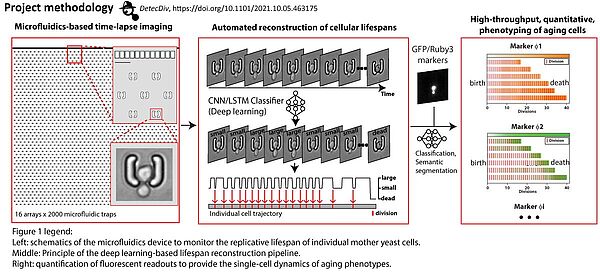Budding yeast is a well known model to study aging at the cellular level: a mother cell can perform a limited number of divisions before entering senescence and dying. Despite the identification of many genes that determine replicative longevity, the mechanism that controls the transition to the senescent state remains very poorly understood, in particular, because the high variability between cells prevents deciphering the causal relationships between different markers of aging when working on populations. In this context, we have recently developed a microscopy platform allowing to follow and quantify the dynamics of successive divisions and fluorescent markers in a quantitative way. The goal of the project will be to use this new methodology to classify the order of appearance of senescence markers in a semi-systematic way. Second, we will use specific longevity-extending mutants to determine how they impact the appearance of markers and thus understand the scenario of entry into replicative senescence.
Thesis/postdoctoral fellowship: Elucidating the scenario of entry into replicative senescence in yeast
Top News

